Flor, the mystery of sherry
Flor is the veil or thin layer of indigenous yeast cells that forms on top of biologically aged sherry wines. It is a kind of Ivory coloured, wrinkled, waxy foam, up to two centimeters thick, that protects the wine from air contact and that grows naturally in the specific microclimate of Southern Spain.
Until the late 18th century sherry wines were mostly vintage wines, brown (oxidative) and heavily fortified. Flor occured naturally but it was seen as a defect, a variation on Mycoderma Vini which makes wine cloudy and smelly. It wasn’t until the 1820s that Manzanilla and Fino as we know them today are produced under the influence of flor, although the mechanisms behind this phenomenon remained unknown for many years.
Most of the old literature simply talks about microorganisms with no clear idea of the specific organic characteristics. Once seen as the “mystery of the bodega”, it wasn’t until the 1930s that scientific research started to identify flor as a type of Saccharomyces Cerevisiae (already known in brewing and bread), which helped to see it in a more positive light.
Biologically aged sherry
Flor basically divides all wines from the D.O. Jerez-Xérès-Sherry into two main categories: biologically aged sherry (the ‘natural’ way so to speak – wines that mature entirely under this layer of flor – Manzanilla and Fino) and oxidative sherry (which matures in contact with oxygen – Oloroso and Pedro Ximénez). Recently quite a lot of research has been conducted to understand the microbiology of sherry winemaking and the specific nature of flor, especially since the popularity of biologically aged sherries has increased. We’ll try to give a short overview of what you should know.
Sherry winemaking process
The basic process for making biologically aged wines consists of two consecutive steps. The first step is fermenting the must obtained from pressing the grapes (nowadays in tanks, previously in wooden casks). This is done by adding cultured, non-flavour creating yeasts or sometimes a pie de cuba, an already fermenting must. The result is a “young wine” which will have reached a minimum of 13,5% alcohol. In Andalucia, flor will start to develop on these base wines almost immediately after fermentation – the indigenous yeasts are present in the Andalusian air so it is simply the natural way of winemaking in this region.
In a second step, a qualitative selection is made and the wine is fortified (encabezado) with rectified wine alcohol. For biological sherries, made from the finest and most delicate base wines, this is between 15 and 15,4% of ethanol volume, the ideal strength for a healthy flor (although 14-16% should work if other parameters are perfect). For oxidative oloroso, the wine is fortified to 17% or more. In this case any existing flor will be killed as it cannot survive in this environment. The resulting wine, the sobretabla, is then ready to be poured into the last criadera of a solera.
Solera system and barrels with air inside
Two traditional practices are then necessary to support the development of flor in biologically aged sherries. Firstly, barrels are only filled to four-fifths of their capacity (sometimes even less for a Manzanilla solera). Whereas direct air contact is avoided in almost all other wine regions, the air above the wine allows the biofilm of flor to develop on the wine’s surface. At the same time, the film isolates the wine from the air.
Secondly, the Solera principle is essential, as the regular addition of new wine imparts nutrients and keeps the flor thriving. In case the flor dies off after a few years (either naturally or intentionally by adding more alcohol), the sherry will have air contact and is then classified as an Amontillado; it will be fortified to 17% or more and continue aging in an oxidative way.
The flor is not inert, it interacts constantly with the wine. The yeast cells consume certain compounds found in the wine, while also creating new compounds. In other words, the metabolic action of the flor constantly changes the composition of the wine and therefore its final aromas and flavours.
Read more about the sherry production process
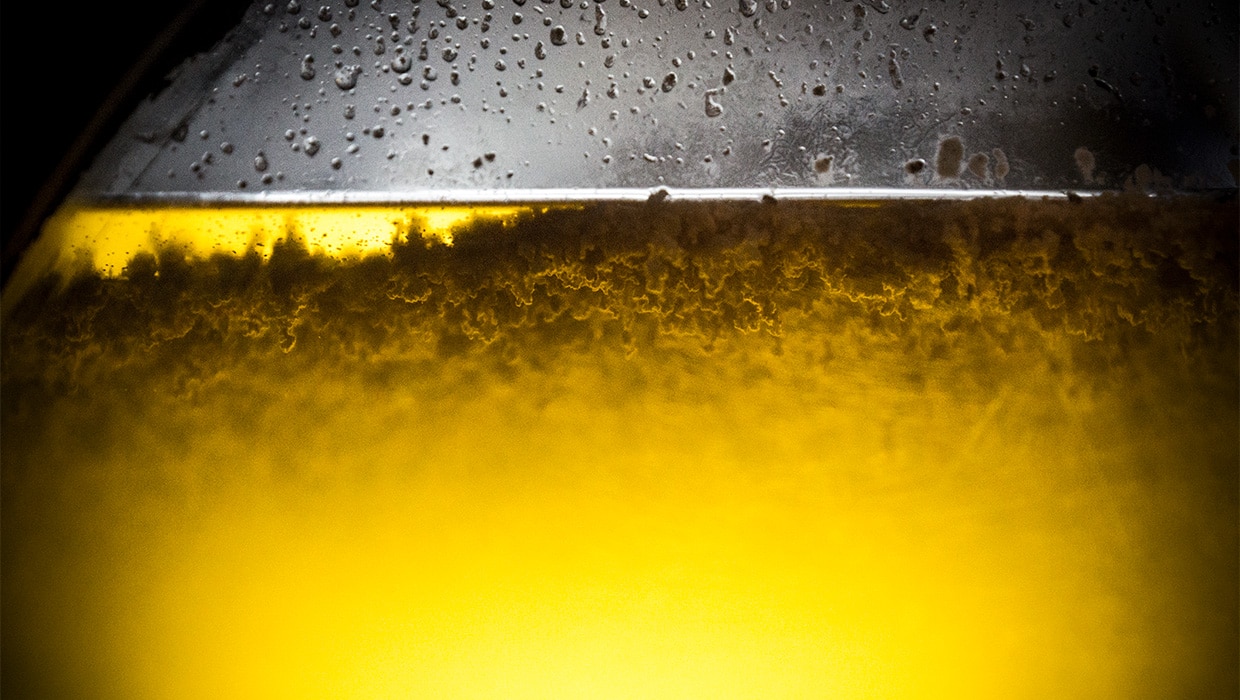
Layer of flor at Bodegas Lustau
Climate conditions
Apart from the specific alcohol levels, flor needs a very particular climate to florish. Humidity is a fundamental factor (ideally 70% or higher), and the sherry casks are just loosely closed by the bung (or not at all) in order to promote flor growth. For the same reason the bodegas are not cellars but are instead at ground level. In fact most of them are designed to promote airflow, with high ceilings and specific ventilation windows. Read more on the architecture of sherry bodegas and how this is closely related to the promotion of flor.
The flor favours cooler climates and higher humidity, so the sherries produced in the coastal Sanlúcar de Barrameda and El Puerto de Santa María have a thicker cap of flor than those produced inland in Jerez. Also, sherry winemakers report a seasonal change in the colour and physical properties of the flor film: it will be thicker in Spring and Autumn. It is also assumed that different strains of yeast dominate the flor depending on the seasonal changes in cellar temperature (which is ideally between 18-22°C – not an easy task when the outside temperature in summer is often 40°C).
Note that similar biologically aged wines are produced in other parts of the world: France (Jura – Vin Jaune), Italy (Sardinia and Sicily), Hungary (Tokay), USA (California) and various South African and Australian regions. While these styles are similar to Spanish sherry, they are influenced by other yeast strains (whether natural or cultured) and different conditions.
A microbiological view on flor
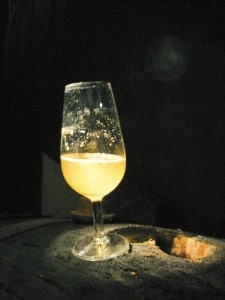
- Saccharomyces Cerivisiae beticus
- Saccharomyces Cerivisiae cheresiensis
- Saccharomyces Cerivisiae montuliensis
- (Zygo)Saccharomyces Cerivisiae rouxii
Saccharomyces Cerivisiae beticus / montuliensis
These different types and their specific effects on the wine were identified in the 1970s. They differ from typical fermentative wine yeasts which don’t form a yeast film. S. beticus is the most common strain, rapidly developing and found in more than 75% of all biological soleras in the region, especially in the younger criaderas. In older criaderas, S. montuliensis tends to become more prominent (found in 15% of the Finos and Manzanillas): it will develop more slowly and can resist / produce higher levels of acetaldehyde (also the reason why Beticus will never come back once a barrel has been populated by Montuliensis). The other two races are relatively uncommon.
Although more than 95% of the film will consist of Saccharomyses Cerivisiae strains, other yeasts, fungi or bacteria may occur. Some of them (Debaryomyces, Zygosaccaromyces, Pichia…) are harmless or benificial to the process, increasing the complexity of the wine. Others (Dekkera, Brettanomyces) can lead to abnormal acidity and other unwanted effects.
There is a recent evolution which tries to genetically improve flor yeasts. New strains such as FLO11, SOD1 or MUC1 may facilitate the establishment of a more stable flor layer and shorten ageing times.
The effects of flor
Ageing under flor differs significantly from oxidative ageing. Let’s have a look at the most important effects.
- Protection of oxygen: flor protects the wine from oxygen while also consuming most of it. This leaves biological sherries much paler and makes its aromatic profile more reductive.
- Decrease of sugars: Manzanilla and Fino are bone-dry sherries. Note that Oloroso is also naturally dry, but it will appear sweeter due to the presence of glycerol.
- Decrease of the ethanol metabolism: the flor yeast (especially montuliensis and rouxii) will consume part of the alcohol, up to one degree of alcohol per year if it is not refreshed by the solera system. Dropping below 14 degrees will result in a bota desmayada (fainting cask) which is highly susceptible to bacteria and unwanted yeasts.
- Glycerol decrease: flor yeast will use it as a carbon source to support its growth. Therefore, biologically aged sherries will contain virtually no glycerol. As it usually adds weight and body to a wine, Manzanilla and Fino will appear more delicate even at similar strength.
- Increase of acetaldehydes: up to 1000 milligrams per liter, twenty times more than a typical sobretabla. This will show as a yeasty or chalky aroma, nuts and notes of overripe (cider) apple. It is considered the best marker of biological aging, and it is inhibited mostly by montuliensis and rouxii. Apart from acetaldehyde, flor will also increase the content in other aroma compounds such as higher alcohols, lactones, and terpenes. They will impart other typical flavours like green almonds, salty notes and Mediterranean herbs.
En rama sherry
Upon bottling, sherry will be filtered. The industry standard is to take out all individual yeast cells. However sherry that was bottled en rama is typically filtered with a larger filter. The biggest clots of yeast cells will be taken out, but it’s perfectly possible for individual cells to pass through. These kind of bottlings will contain some living flor, but given the small amounts, this is perfectly harmless for consumption. It’s even said to contain antioxidant compounds. In any case, the taste of en rama sherry will be richer and fuller.
Climate and terroir of the bodega
Looking at the microbiological identidy of flor yeast, it has been proven that each bodega, even an individual cask will have a unique personality and its own preference towards specific yeast populations. For instance Beticus is the dominant yeast strain in Sanlúcar. It is a more vigorous type that is found in up to 90% of all barrels in Sanlúcar – with the notable exception of a few bodegas like Sánchez Ayala, Barbadillo and Argüeso which have a number of classic Manzanillas dominated by Montuliensis (e.g. Gabriela or Solear En Rama). In Jerez we see more Montuliensis, in up to 50% of all barrels, but again with exceptions.
To a certain extent the difference in yeast populations also explains the difference between a Manzanilla sherry (lighter character, less acetaldehydes and a more naked wine) and a Fino sherry (a more punzante, strong character with plenty of acetaldehydes).
Also part of the equation are the climatic conditions of each vintage. Warmer vintages will naturally lead to a higher degree of Montuliensis, while colder vintages will give way to more Beticus. Of course this effect is attenuated by the solera system but it’s certainly visible in añada wines.
Flor and terroir of the soil
Recent developments show that there is also a clear connection to the soil and geology. Pagos and the specific location within the pago, as well as the specific type of albariza on which the root system grows, will have a huge impact on the selection of the dominant yeast strain, how intensely the flor can grow and how long it can age. This has been proven by maturing barrels of Manzanilla and Fino from the same vintage next to each other in the same bodega, the only difference being the provenance of the grapes.
It showed that a Manzanilla made from a fragile, granular lentejuelas (low grape stress) inhibits a healthy, thick flor cap whereas a Manzanilla from a laminar, rigid barajuelas (high stress) leads to a much thinner, patchy layer of flor, often with a different strain of Saccharomyces.
It’s clear that we still don’t understand all the elements that define flor entirely. With the recent surge of single vineyard wines, we’ll definitely learn more about the relationship between flor and terroir.
Further reading: Biological ageing of sherry by César Saldaña, the president of the D.O.


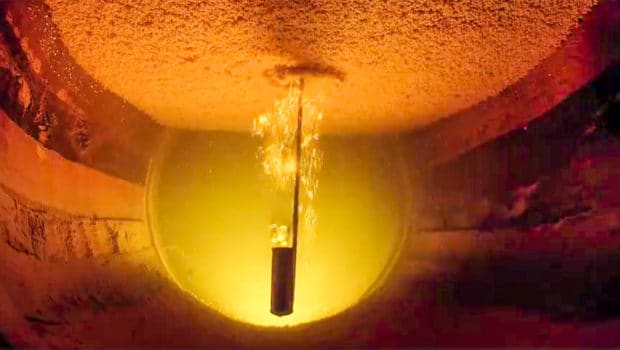
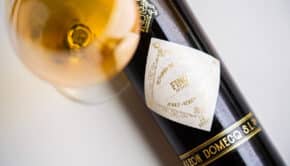

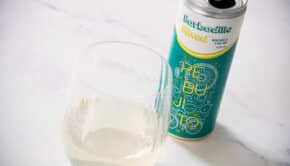
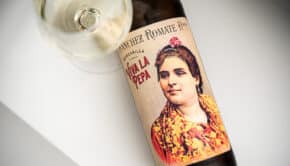





Pingback: The Sommelier’s Palate – Ladies and Gentlemen, The Sommelier at Restaurant El Celler de Can Roca, Spain – Carles Aymerich - The Wandering Palate
Pingback: Visiting Bodegas Gutiérrez Colosia - Spanish Sabores
Pingback: The Vuelta a España Begins in Jerez with Sherry | winetuned
Pingback: Five Fascinating Facets of Flor | The Bubbly Professor
Pingback: Sherry Basics | wine goes with everything
Pingback: The When and Why of Amontillado | C cLear World